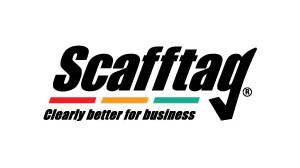
Scafftag: How to execute scaffolding inspections to stay compliant and safe?
When working at height, scaffolding safety is essential. Inspections play a critical role in ensuring that every scaffold is fit for purpose and risk-free. But are you following the best practices? Scafftag has more…
For projects involving working at height, a risk assessment should be completed to determine the appropriate equipment and provide guidance on inspection. This risk assessment should also be provided to contractors before any work commences. Selection of the equipment should take into account a range of factors such as ground conditions, duration and frequency of use and additional risks posed by use, installation and removal of the work equipment.

Scafftag offers invaluable Scaffold Inspection Reporting Tools and a comprehensive Scaffold Inspection Guide to help you maintain compliance and safety on every site. Whether you’re a contractor, supervisor, or inspector, their tools can make a difference.
Recommended actions
Scaffolding must be inspected by a competent person:
– Before it is put into use
– At seven day intervals until it is dismantled
– After bad or excessively wet weather or high winds or another event likely to have effected its strength or stability
– After any substantial additions or other alterations
In addition to scaffolding structure inspections, scaffolding tie tests should also be carried out, prior to commencing work, by a suitably competent person other than the installer of the original fixings. In addition, a minimum of three anchors must be tested and at least five percent of the overall quantity (1 in 20).
If, when using load test equipment, any of the ties fail to meet the safety margin a full inspection is required and the rate of proofing should be doubled to 1 in 10. Each anchor should also be tested to at least one and a half times the required tensile load with no significant movement of the fixing.
Competent person
A competent person must carry out general access scaffolding inspections. Written proof of the competence of persons used to inspect scaffolding should always be obtained by the person responsible for the scaffolding and inspection work. A written report must be prepared by the competent person. The report should be written out at the time of the inspection but if this is not possible it must be provided to the responsible person within 24 hours.
A copy of the report should be kept on site and a further copy be retained for a period of three months from the completion of the work with the person on whose behalf the inspection was carried out. If a scaffold fails inspection this must be reported by the person carrying out the inspection, to the person responsible for the scaffolding, as soon as possible.
Want to learn more or need expert advice? Read Scafftag’s blog, download the Scaffold Inspection Guide Poster in the PDF form or order it in a printed format.
Visit the Scafftag website today and ensure your scaffold inspections are up to standard.
Latest news

30th April 2025
Digital Construction Week announces seminar programme for its landmark 10th edition
Digital Construction Week (DCW) returns to ExCeL London on 4 – 5 June 2025 with its most impactful programme yet. It brings together the best and brightest from across AECO, for two days of practical learning and idea sharing.
Posted in Articles, Building Industry Events, Building Industry News, Building Products & Structures, Building Services, Building Systems, Exhibitions and Conferences, Information Technology, news, Restoration & Refurbishment, Retrofit & Renovation, Seminars
29th April 2025
Senior pledges to ‘bee’ part of the solution with new biodiversity initiative
Senior Architectural Systems has installed its first on-site beehive, marking another step forward in its commitment to sustainability and biodiversity.
Posted in Articles, Building Industry News, Building Products & Structures, Building Services, Curtain Walling, Doors, Glass, Glazing, Innovations & New Products, news, Restoration & Refurbishment, Retrofit & Renovation, Sustainability & Energy Efficiency, Walls, Windows
29th April 2025
West Fraser range delivering key benefits for South-East carpentry company
An experienced carpenter and building site manager who has recently set up his own company is using high performance panel products from the West Fraser range.
Posted in Articles, Building Industry News, Building Products & Structures, Building Systems, Case Studies, Garden, Restoration & Refurbishment, Retrofit & Renovation, Sustainability & Energy Efficiency, Timber Buildings and Timber Products
29th April 2025
CPD Courses Available Online From Ecological Building Systems
Ecological Building Systems, a leading supplier of natural building products for sustainable construction, has revealed its comprehensive CPD programme for the year ahead.
Posted in Articles, Building Industry Events, Building Industry News, Building Products & Structures, Building Services, Continuing Professional Development (CPD's), Information Technology, Innovations & New Products, Insulation, Restoration & Refurbishment, Retrofit & Renovation, Seminars, Sustainability & Energy Efficiency, Training, Walls, Waste Management & Recycling
 Sign up:
Sign up: